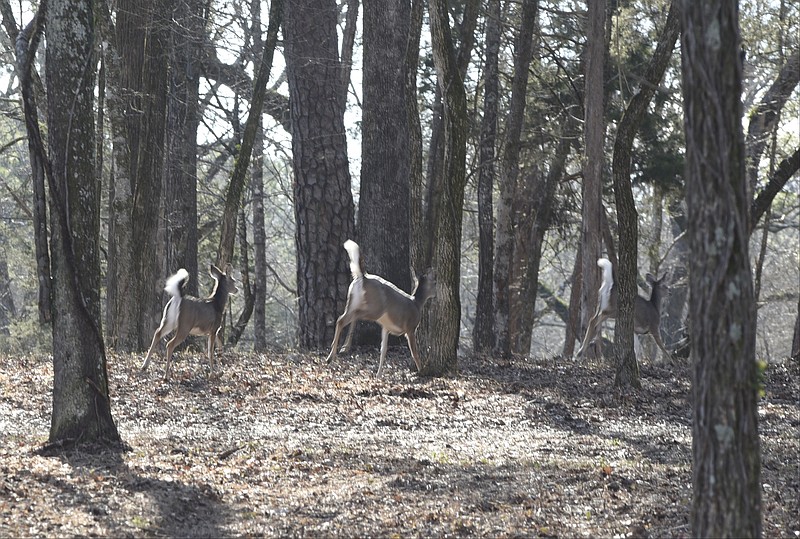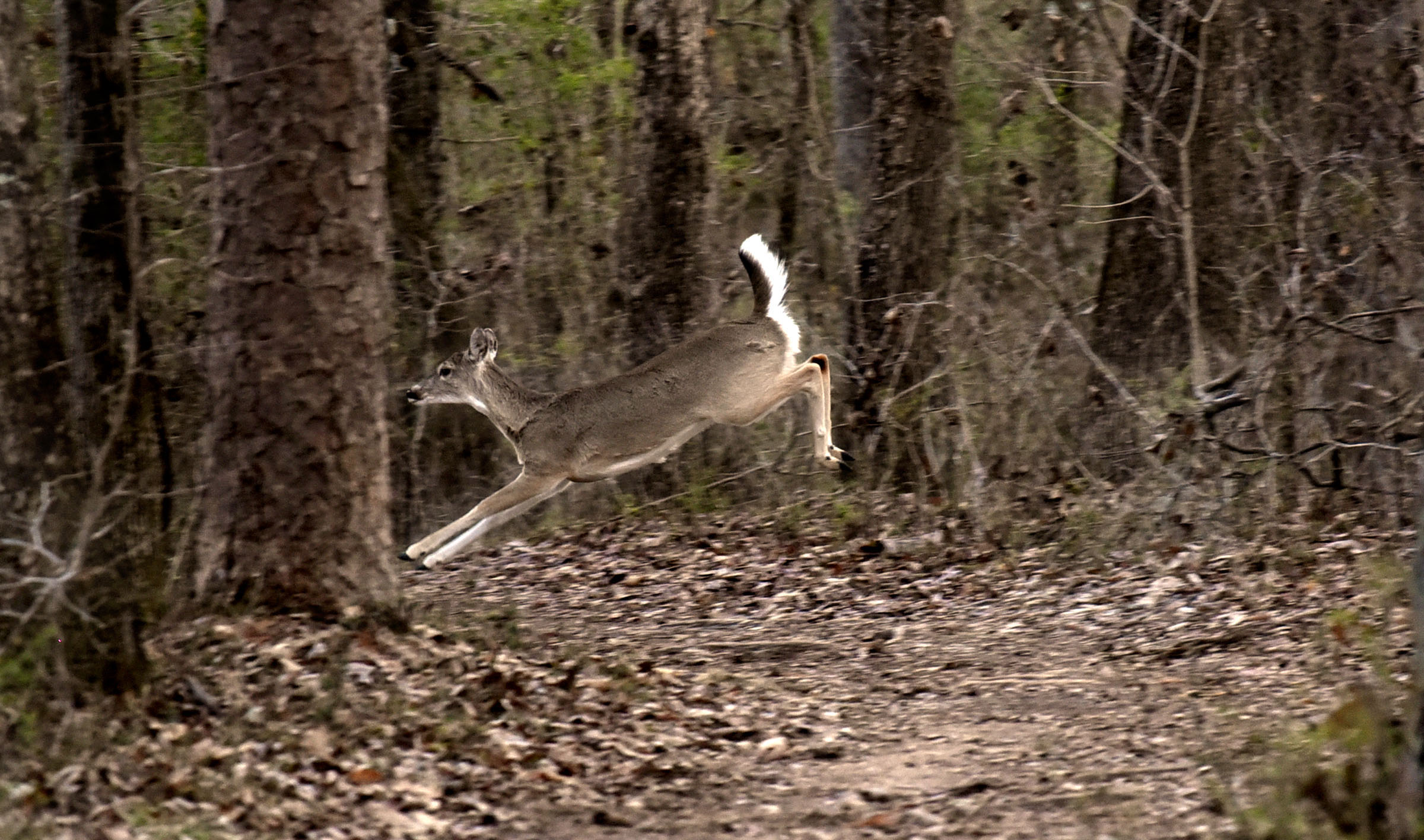North Carolina wildlife officials have confirmed a rare case of rabies in a dead white-tailed deer in Cherokee County, which borders Polk and Monroe counties in Tennessee.
No Tennessee or Georgia deer have been confirmed with rabies, according to officials with the Tennessee Department of Health.
"We don't have any concern like that right now in those counties [Monroe and Polk], but we're always doing surveillance in those counties with our partners, the U.S. Department of Agriculture Wildlife Services," health department deputy state epidemiologist John Dunn said.
In Tennessee's eastern counties, state health department officials so far this year have confirmed rabies cases in Bradley, Greene, Hamilton, Jefferson, Johnson, Knox and Sevier. Cases of the deadly disease also have been confirmed in Davidson, Maury, Rutherford and Williamson counties in Middle Tennessee.
Hamilton County's case involved a bat, while Bradley's was a cat, records show. The cases in Northeast Tennessee involved bats, skunks and raccoon. The Middle Tennessee cases involved a bat, fox, skunks and a dog.
Recommendations for deer hunters
The North Carolina Wildlife Resources Commission recommends taking the following precautions to prevent disease transmission of rabies:› Do not handle or eat any animal that is acting abnormal or appears to be sick› Wear latex or rubber gloves when field dressing› Minimize the handling of the brain and spinal cord› Do not allow pets around your field dressing area to prevent contact with blood and other tissues› Wash hands, boots and instruments thoroughly after field dressing is completed› If you have your deer commercially processed, request your animal be processed individually and without meat from other animals› Use proper cooking temperatures to ensure safe food
While there have been no confirmed cases of rabies in Tennessee deer, people should bear in mind that all wild and domestic mammals can carry rabies, Dunn said.
State deer biologist Jonathan Shaw, with the North Carolina Wildlife Resources Commission, said most people don't think about deer being carriers of rabies.
"Deer can get rabies. We believe it's very rare," Shaw said. "We've had seven positives over the past 20 years."
RABIES SYMPTOMS
The first symptoms of rabies may be very similar to those of the flu including general weakness or discomfort, fever or headache. These symptoms may last for days.There may be also discomfort or a prickling or itching sensation at the site of the bite, progressing within days to symptoms of cerebral dysfunction, anxiety, confusion, agitation. As the disease progresses, the person may experience delirium, abnormal behavior, hallucinations, and insomnia.The acute period of disease typically ends after two to 10 days. Once clinical signs of rabies appear, the disease is nearly always fatal, and treatment is typically supportive.Disease prevention includes administration of both passive antibody, through an injection of human immune globulin and a round of injections with rabies vaccine.Once a person begins to exhibit signs of the disease, survival is rare. To date less than 10 documented cases of human survival from clinical rabies have been reported.It’s important to keep pet vaccinations up to date to maintain a buffer between pets and any wildlife they encounter.Source: U.S. Centers for Disease Control and Prevention
Tennessee Wildlife Resources Agency spokeswoman Mime Barnes said that although the Volunteer State has no rabies among deer, there is an outbreak of deer hemorrhagic disease, which is no danger to humans. Deer with hemorrhagic disease often are found dead or dying near water because the fever makes them seek a way to cool off.
North Carolina officials recently received multiple reports of dead deer around water sources and dying deer having trouble standing up, no fear of humans and lack of coordination. Shaw said about 20 of those reports came from Cherokee County.
Rabies, hemorrhagic disease and chronic wasting disease, which also is not dangerous to humans, can exhibit similar symptoms in affected deer, Shaw said.
Hemorrhagic disease is seasonal and transmission ends with the first frost.
North Carolina officials pointed to one noticeable difference in rabid deer.
"The one that tested positive for rabies didn't have any hair on its head," Shaw said. "That's been the case with the last three positives we've had."
People who encounter a deer or any other animal that acts sick or behaves unusually should report the incident.
Contact staff writer Ben Benton at bbenton@timesfreepress.com or 423-757-6569. Follow him on Twitter @BenBenton.
Report sick or dead deer
In Western North Carolina, contact Justin McVey at 828-273-798.In Tennessee, for deer suspected of having rabies, contact your county health department. To report sick or dead deer in Southeast Tennessee, contact the Tennessee Wildlife Resources Agency Region 3 office at 800-262-6704.

